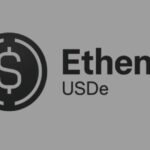Congressional legislators have re-engaged the regulatory challenge, introducing a pair of novel Senate proposals intended to finally mediate the jurisdictional dispute concerning cryptocurrency between the SEC and the CFTC.
The regulatory jurisdiction over digital assets has long been a protracted conundrum for Washington. While the Digital Asset Market Clarity Act of 2025 was approved by the House this past summer, no action has yet been taken by the Senate.
Presently, two Senate panels have unveiled diverging proposals, with each one purporting to establish regulatory coherence. These drafts delineate a novel jurisdictional framework prepared to fundamentally alter everything from Bitcoin spot marketplaces to Ethereum disclosures and exchange operational guidelines.
A single proposal from the Senate Agriculture Committee broadens the scope of the Commodity Futures Trading Commission’s function. Conversely, the Senate Banking Committee’s iteration establishes new SEC authority over “subordinate assets” and articulates the circumstances under which tokens graduate from securities designation.
For participants within the cryptocurrency sector, this determination is paramount. These pieces of legislation possess the capacity to reconfigure asset custodianship, categorization, and transparency, thereby revising the boundaries of the U.S. digital-asset marketplace.
The Agriculture Bill and the Scope of CFTC Authority
The Agriculture Committee’s proposal, advanced by Senators John Boozman and Cory Booker, confers jurisdiction upon the CFTC concerning “digital fungibles” and their immediate trading venues. Registration for trading platforms, intermediaries, and sellers is established, emulating the CFTC’s supervision of conventional commodities.
Intermediaries would be mandated to employ authorized custodians and keep separate client holdings to mitigate potential conflicts of interest with associated entities. The legislation permits joint CFTC–SEC mandates for entities with overlapping functions or dual enrollment, leaving specific matters, such as DeFi, to be addressed in future deliberation.
This iteration amplifies the provisions of the House Clarity Act and is purposed to situate crypto immediate trading venues under the CFTC’s purview. American Bitcoin trading platforms would be compelled to formally register as digital-commodity exchanges, adhere to novel capital and custodianship regulations, and furnish enhanced consumer safeguards.
Data sharing across trading venues could be standardized, thereby enhancing the monitoring utilized by ETF purveyors. Exchange-Traded Funds (ETFs), nonetheless, will remain under the aegis of the SEC.
The ramifications transcend mere documentation. Should Bitcoin immediate trading venue supervision be transferred to the CFTC, trading platforms would be required to adhere to commodity-exchange principles, prioritizing meticulous reporting and market scrutiny above investor transparency mandates.
Superior understanding of market quality and fluidity could be afforded to analysts and market participants. Notwithstanding the CFTC’s augmented responsibilities, the SEC will continue to govern securities instruments and crypto futures. Dual supervision persists.
The Banking Bill and the SEC’s ‘Ancillary Asset’ Framework
Conversely at the Capitol, the Senate Banking Committee’s proposal, designated the Responsible Financial Innovation Act, concentrates upon digital assets that exist across the continuum separating securities and commodities. An “auxiliary asset” is defined as a “fungible digital commodity” disseminated through an agreement that concurrently constitutes an investment covenant.
Explicit jurisdiction to supervise these instruments would be granted to the SEC by the proposal, mandating that issuers furnish transparency regarding token disbursements, stewardship, and pertinent hazards. Furthermore, the agency is allotted approximately two years to conclude a regulation delineating what comprises an “investment covenant,” and a decentralization certification process is introduced that permits a project to shed securities classification once network control subsides beneath stipulated limits.
A conditional exemption mechanism for digital tokens associated with “active ventures,” such as Ethereum, is furnished by this framework. A token could initiate its existence under SEC purview, subjected to transparency and investor safeguards, but later transition once administrative control becomes adequately dispersed.
This system imparts coherence to an ambiguous domain that has afflicted the sector since the period of the DAO report. Moreover, the SEC is now compelled to formally specify in documentation the precise definition of decentralization, as opposed to depending on ad hoc regulatory actions.
Within the parameters of this paradigm, operational dissimilarities become more pronounced. Bitcoin would likely be classified as a digital fungible under the CFTC’s jurisdiction.
Digital tokens possessing corporate affiliations would be retained under the SEC’s auxiliary-asset program until decentralization is demonstrated. Centralized trading platforms would find themselves situated between both regulatory structures. They would enroll as CFTC digital-commodity exchanges for immediate crypto trading, but will remain under the purview of the SEC for listed securities.
The cumulative consequence could necessitate that American trading platforms adopt dual enrollment, more stringent capital stipulations, and increasingly illuminating transaction records.
Examining the two methodologies, schedule is among the greatest imponderables. Specific time limits for mandate implementation are imposed by the Banking proposal.
Nevertheless, the Agriculture proposal leaves fundamental queries unaddressed. Both depend upon prospective harmonization stipulations and public dialogue before any of this is implemented. The House iteration has already been approved. The Senate proposals are still being deliberated, and dissent within both factions has emerged.
The pair of proposals presently function as an operational compendium for developers and market participants. Primarily, it is revealed by them how U.S. immediate trading venues might be developed under a CFTC-directed structure.
Subsequently, the proposals demonstrate the manner in which digital token ventures could ultimately be released from securities classification, and how trading platforms might be required to reconstruct internal segregation protocols. While the proposals do not deliver the precision their titles guarantee, the next stage of the regulatory jurisdictional contest is, in fact, delineated by them.
In a marketplace where categorization governs fluidity, custodianship, and adherence, ascertaining which authority establishes the boundary first could be judged as consequential as any on-chain indication.















